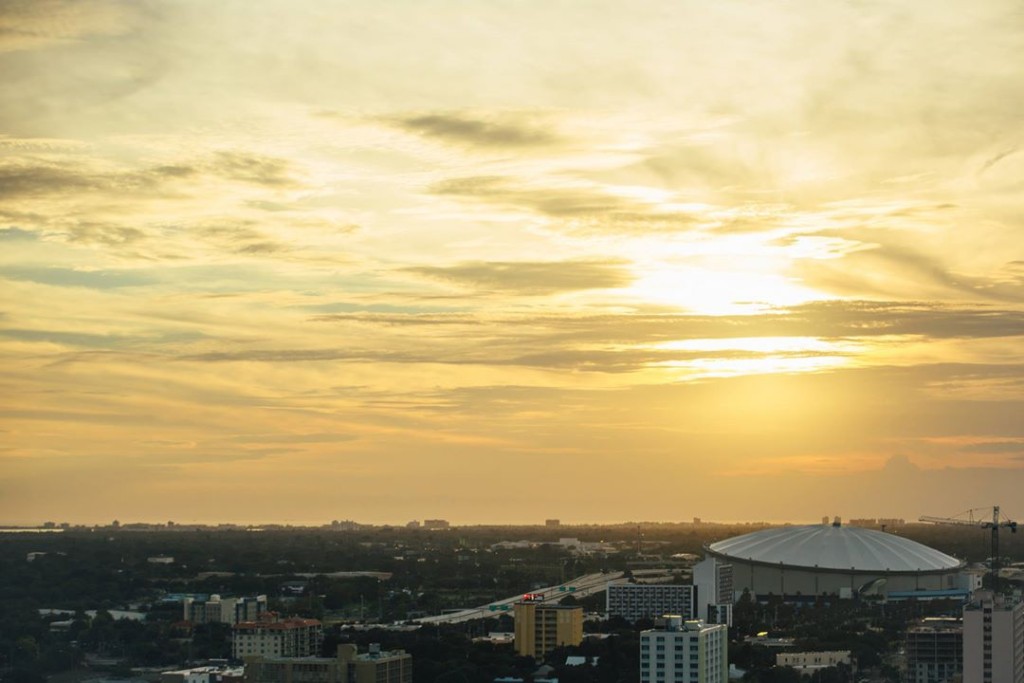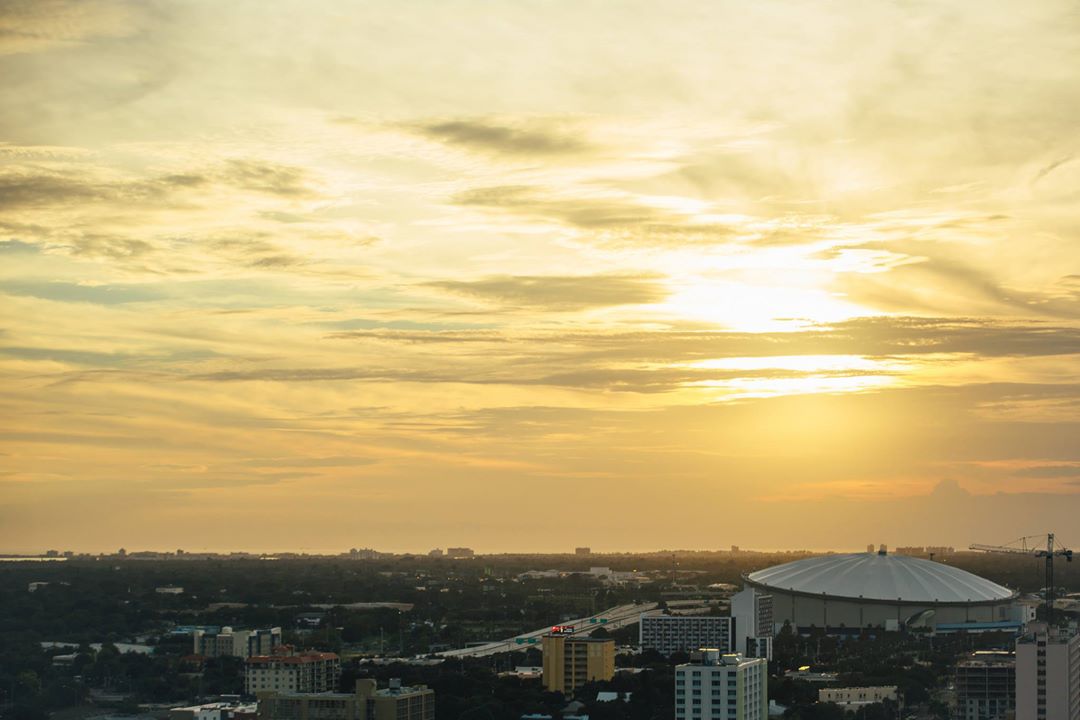
On Thursday, the St. Petersburg City Council is expected to vote in favor of a new stadium proposal between the city and the Tampa Bay Rays. Even though the Stadium Saga will continue to drag on until a reasonable solution is found, we are undoubtedly on the cusp of a new era of stadium discussions, which likely will lead to the construction of a new facility on one side of the bay or the other.
In an op-ed like piece posted to his Facebook page, Mayor Rick Kriseman heralded the newly minted understanding as “good news for baseball fans, our taxpayers, the city of St. Petersburg and our entire region.”
It is his opinion, that by allowing the organization to explore future stadium locations in both Pinellas and Hillsborough counties, the likelihood of the team remaining in St. Petersburg ― or the region in general ― is greatly increased.
Even with other viable locations within Pinellas ― namely Carillon, Toytown and Derby Lane ― Mayor Kriseman held firm to his belief that the current site would be the best place for a new stadium:
To be clear, I still believe the team’s current site, re-imagined and redeveloped, is the best place for a new stadium. In the coming years, more and more people will be living within walking and biking distance of the team’s current location. The interstate will continue to offer an easy entry and exit for fans traveling by car. Our bus system will be modernized, and the potential for a high-speed ferry linking our waterfront to Tampa is a real possibility.
The question now begs, should the City Council approve of the proposal, what happens next?
For St. Petersburg, the focus will shift toward keeping the Rays within city limits. Mayor Kriseman will announce the formation of a Baseball Forever Campaign to include St. Petebased fans of the team, business leaders, and elected and government officials. The goal will be to pitch the city to the Tampa Bay Rays by, in the words of Kriseman, “demonstrating future fan and corporate support and the many benefits of remaining on the current site, perhaps on the site’s eastern half closer to our bustling downtown and waterfront.”
On the other side of the bay, Hillsborough County Commissioner Ken Hagan has already formed a committee of government and private sector leaders, and is hoping for the opportunity to sit down with Rays officials within a matter of weeks.
There is still no mention of how much money the team may seek in the form of public tax dollars, and they likely won’t willingly open their books to demonstrate a financial need for public help. Noah Pransky (Shadow of the Stadium) insists that’s so because professional organizations (and in this case, MLB as well) would rather for you to focus on the boogeyman and not how much money they want from you for that next stadium.
On a related side note, Pransky also noted the subtle, yet curious, clause requested by the Rays and embedded in the Memorandum of Understanding. The clause could allow the Rays to play up to 10 “home” games in a market outside of the region once they left Tropicana Field. The 10 games are not a guarantee and could include international trips to Japan or Cuba, however, the permission might also apply to other markets in North America.
Pransky writes:
The Rays’ Memorandum of Understanding (MOU) with St. Petersburg sets a price for damages if the team chooses to end its Tropicana Field contract before 2027 in favor of a stadium elsewhere in Pinellas or Hillsborough Counties. However, the stadium does not need to be new and the Rays only need to sign a promise of some sort to play there through 2027.
In short, without a long-term commitment past the 2027 from the Rays, the door is open for the team to use the 10 “home” games to test the waters of other potential Major League markets while still playing the majority of their games in a temporary location elsewhere in Hillsborough or Pinellas County.
In a hypothetical scenario posited by former Mayor Bill Foster, for only $24 million, the Rays could tear up their existing contract after the 2017 season and start playing 71 home games in an existing Tampa Bay minor-league facility – potentially with additional, temporary seats – and play 10 games a year in markets like Montreal, New Jersey, or Mexico City. They would then only need to deal with the unknown legal repercussions of their new lease(s) if they wanted to leave before 2027, rather than the seemingly-ironclad contract the team is currently locked into with St. Petersburg.
So where does that leave us?
We are left with the underlying hope that Principal Owner Stu Sternberg remains true to his word, and his commitment to the region.
Sternberg publicly solidified his allegiance to the region in an interview with Bill Chastain (MLB.com) in March of last year:
At some point or other we’re going to get this right,” Sternberg said. “And I want it to happen sooner for the benefit of the citizens of St. Petersburg. For the benefit of our fans throughout the region. For the benefit of Major League Baseball. And really, so we can take the focus off of my organization, so we can do 100 percent of what we need to, which is to build a fan base. Not have to answer these questions. Build a fan base. Not have to have people scared and worried. Build a fan base and know that we’re going to be here for 50 or 60 years.
Personally, I remain hopeful for that perfect deal that doesn’t mire the taxpayers in a Loria Dome like covenant. …One in which our small market team stays in the region for the long-haul. Whatever the case, it’s time to buckle your seat belts Rays fans, we’re in for long, arduous, and possibly bumpy ride. Building a new stadium is an errand that won’t magically be sorted out by the weekend.

